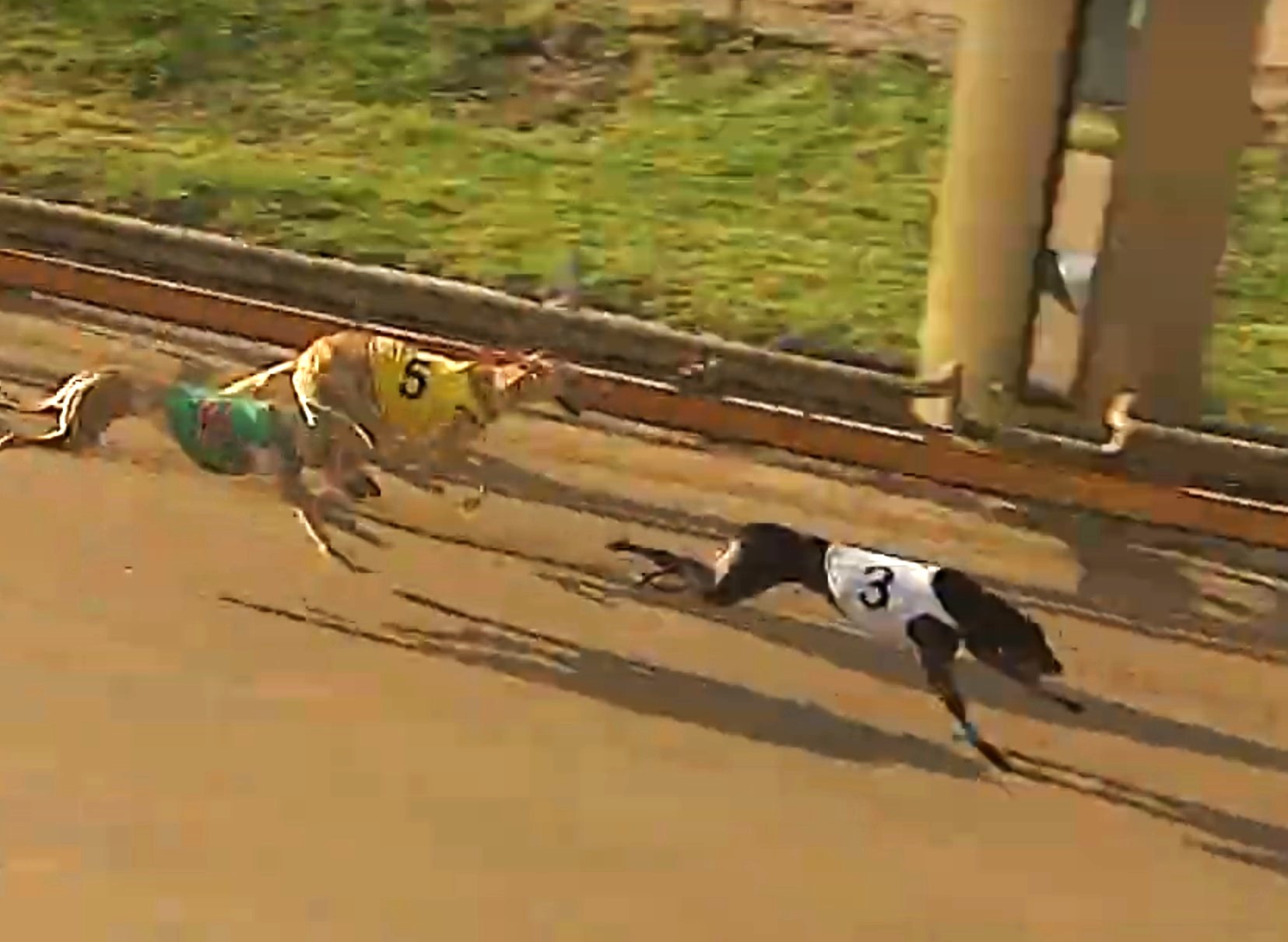The latest greyhounds to suffer from post-race seizures have highlighted the brutality of their racing “careers”.
At Geelong on 26 March 2024, Dane Mullane won his race but suffered “Exercise Induced Ataxia” and a seizure after the race.
He had raced five times in 24 days.
At Ballarat on 15 March 2024, Coastline collapsed in the catching pen and was found to have suffered a seizure. A 28 day stand down period was imposed.
Coastline was running a trial after being charged with “failing to pursue the lure with due commitment” at Sale, and banned for three months. In the race before that at Sandown, he was charged with marring and banned for 28 days. At the Meadows last year on 2 September, he was charged with marring and banned for 28 days.
Dana Mullane and Coastline followed these other dogs that recorded seizures after racing in 2024: Mill Ali, Shima Ruby, Tomida, All On Merrett.
In 2023 these dogs suffered seizures: Oceania Blue, Rosie’s No Angel, Zipping Ventura, Encrypted, Quest For Fame, Claretown Ann, Bridget Gem, Chasing Gold, Russian Berry, Harbour Lights.
In 2022 these dogs suffered seizures: Dunwerkin, Harada’s Mate, Hovey’s Bourbon, Mr. Audacious, Our Maxie Boy, Aston Laurent, Hovey’s Bourbon, Zipping Ventura, Snowy’s Brother, Emerley Jaguar.
This list can be considered an undercount as CPG has not focused on seizures in the past. Three of the dogs listed above have since died.
Two experienced vets consulted by CPG have made the following observations:
These incidents raise questions about the types of seizures.
Are they:
1) true seizures [neurological anomalies];
2) a muscle-related issue like Exertional Rhabdomylosis which is muscle damage due to extreme exertion and causes high body temperature, sudden pain, weakness, shaking, wobbliness and can be fatal;
3) some type of electrolyte abnormality.
True seizures are sometimes brought on by stress. The breeding pool of greyhounds in Australia is quite small so, if true seizures, it could be a genetic link due to popular bloodlines carrying that gene.
Post-race collapses (whether it be seizure or other) could be linked to the intensity of racing. This includes the transporting to the track, sitting around waiting to be raced (likely a build up of adrenaline over hours), the fear and panic as they are forced into the starting boxes, the stress hormones released as they compete, the dehydration and electrolyte imbalances from probably not drinking much on race day due to transport, etc, plus some trainers doing “kidney flushes”. All this accumulates in a very physiologically and psychologically stressed animal.
They may also be caused by a biochemical derangement that triggers a post-race seizure, in particular low calcium. Hyperthermia can also cause seizures, which is why high temperatures are dangerous for greyhounds.
In essence, these cases show that greyhounds are pushed too hard in unsuitable conditions.
Image at top shows Dana Mullane winning his race before suffering a seizure.
